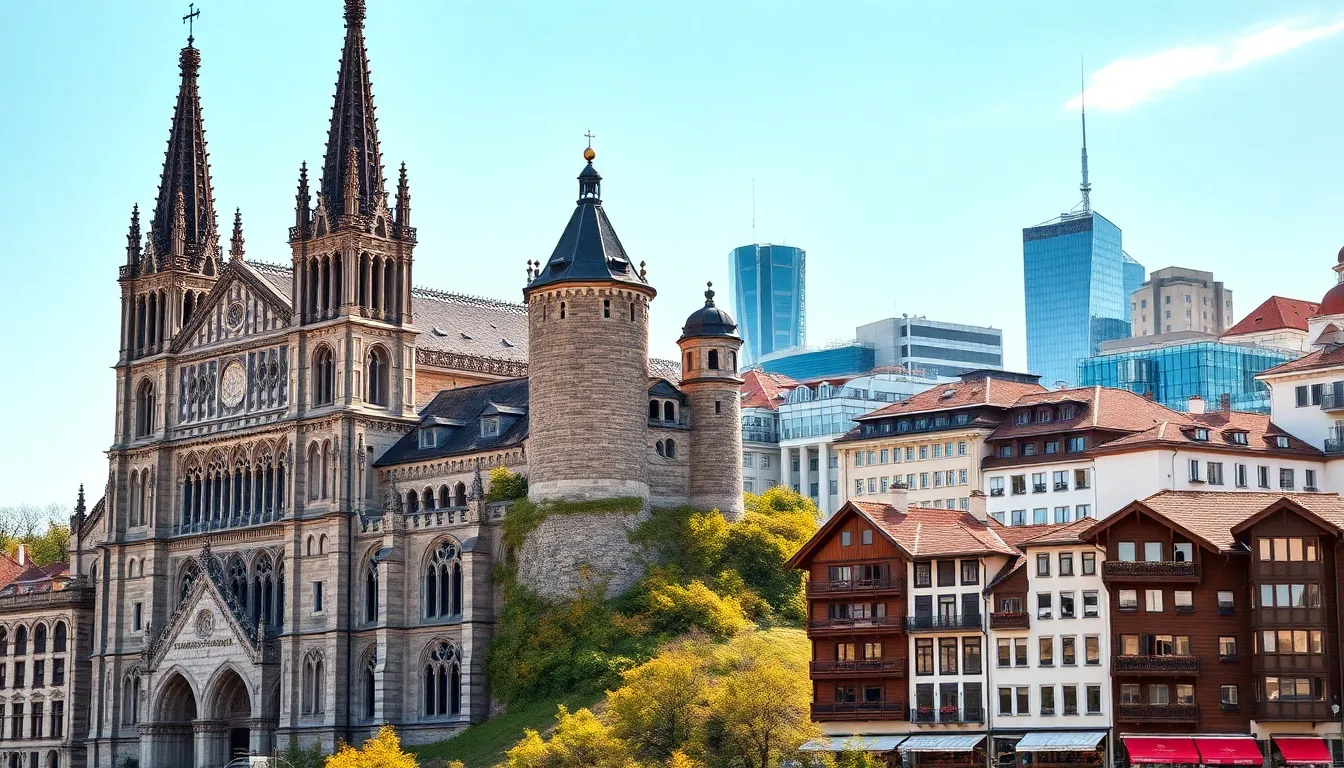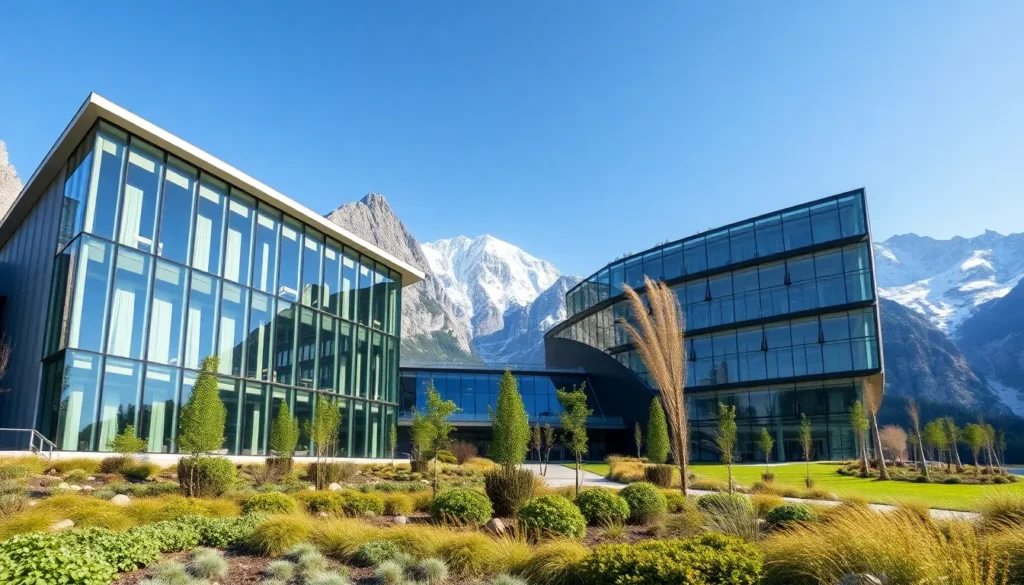Table of Contents
ToggleSwitzerland isn’t just about chocolate and skiing, it’s a treasure trove of stunning architecture that tells a story as rich as its famous fondue. From medieval castles nestled among the Alps to sleek, modern structures that seem to rise from the very landscape itself, Switzerland’s architecture is a feast for the eyes. If you’ve ever wondered how history, culture, and innovation meld in these picturesque settings, you’re in for a delightful jump into the world of Swiss architectural wonders.
Historical Overview of Swiss Architecture

Switzerland’s architectural narrative begins over a millennia ago, shaped by its diverse regions and cultural influences. The early settlements featured simple wooden structures, evolving into robust stone buildings by the Middle Ages. Notably, churches like the Cathedral of Bern showcase stunning Gothic elements, while many castles, often perched on hills, reflect the medieval spirit of fortification and grandeur.
As time marched on, the Renaissance brought a shift to more decorative styles, integrating classical elements with local flavors. The Baroque period in the 17th century introduced dramatic flourishes and opulent interiors, seen in structures such as the Abbey of St. Gall.
Fast forward to the 19th century, and you’ll find the eclectic mix of styles that characterized Swiss architecture. The rise of industrialization led to functional yet aesthetically pleasing buildings. Cities like Zurich blossomed with striking facades, showcasing a vibrant blend of modernity and tradition.
So, from the rustic charm of timber homes to the opulence of cathedrals, Switzerland’s architecture is a mosaic that chronicles every epoch. But let’s dig deeper into what has influenced these unique styles.
Influences on Swiss Architectural Styles
Swiss architecture is a true reflection of its cultural tapestry. Varied influences stem from its geographical location, historical interactions, and cultural exchanges.
Key Architectural Movements in Switzerland
Among the most profound influences is the interplay between local customs and external trends. Gothic architecture flourished under the influence of the Roman Empire, while Renaissance styles were permeated by ideas from Italy.
The arrival of modernism in the 20th century brought in a sharp turn, tearing away from ornate designs to embrace simplicity and functionality. Architects like Le Corbusier revolutionized residential design, merging aesthetics with pragmatic living.
In contemporary times, designs often incorporate elements from nature, a clear nod to the Swiss appreciation for their landscapes. This blend of historical lineage and modern innovation creates an architectural identity as unique as the country itself.
The Role of Sustainability in Modern Swiss Architecture
In a world increasingly focused on environmental issues, Switzerland is leading the charge in sustainable design. The Swiss talents in integrating green technologies with architecture make for buildings that not only look good but also do good.
Iconic Architectural Landmarks in Switzerland
Take for example the Vitra Campus in Weil am Rhein, where creativity meets eco-friendliness. Facilities designed by renowned architects seamlessly incorporate sustainability measures, including solar energy and rainwater collection.
Another shining example is the BHV warehouse in Basel: this structure utilizes local materials and innovative construction methods that reduce its carbon footprint. The commitment extends even to private buildings, where zoning laws encourage eco-friendly innovations like green roofs and energy-efficient designs.
In essence, modern Swiss architecture does more than house its inhabitants. It’s a clear statement of commitment to the environment, influencing how future designs are approached.
The Interplay Between Nature and Architecture
Switzerland’s stunning landscapes play a pivotal role in its architectural narrative. The majestic Alps and verdant valleys not only inspire but also dictate design ethos. Architects strive to create harmony between structures and their natural surroundings, ensuring that each building complements rather than competes with nature.
Many of Switzerland’s houses feature large windows, offering panoramic views of pristine lakes and snow-capped mountains. The use of natural materials, such as wood and stone, further enhances this dialogue, creating a seamless blend between indoor and outdoor spaces.
Also, the Swiss tradition of landscape architecture highlights this interplay. Parks, gardens, and public spaces are crafted thoughtfully, embracing organic forms and native vegetation, elevating the overall architectural experience. Hence, architecture in Switzerland is not merely functional: it’s a commitment to living in synergy with the breathtaking nature surrounding it.
Future Trends in Swiss Architecture
Looking ahead, Swiss architecture is poised to evolve even further, with several trends emerging on the horizon. The growing emphasis on digital technologies is reshaping design processes. Innovative software allows for more intricate designs and effective construction practices, minimizing wastage and maximizing creativity.
Also, the idea of modular architecture is gaining traction. This concept involves prefabricating building components off-site, providing greater flexibility and efficiency in construction. This method not only speeds up the building process but also contributes to sustainability by limiting onsite waste.
Besides, as climate change remains a pressing concern, architectural solutions focusing on resilience and adaptability will take center stage. The Swiss are already experimenting with designs that can withstand extreme weather patterns, ensuring that their buildings not only endure but thrive.
Summarizing, the future of Swiss architecture is bright, inventive, and full of potential. As it continues to reflect its rich history while embracing advancements in technology and sustainability, Switzerland remains a captivating place for architectural enthusiasts.





